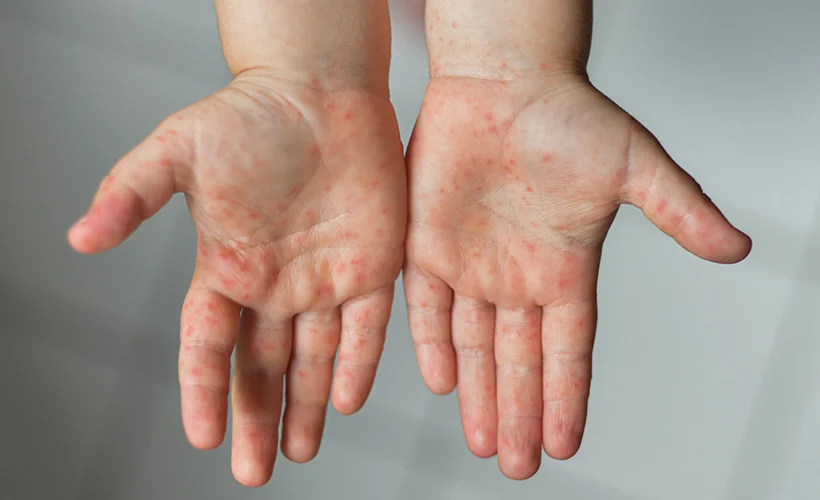HFMD primarily affects children between the ages of 3 and 7 years, though older children and adults can also contract it.
New Delhi: Delhi is witnessing a sudden spike in Hand, Foot and Mouth Disease (HFMD) cases among young children, prompting some schools to issue advisories, shift to online classes, and intensify sanitisation drives. Although the viral infection is generally mild, it spreads rapidly, especially among children aged 3–7 years. Schools are implementing sanitisation drives, but experts stress the need for timely isolation and awareness.
What is HFMD?
HFMD is a highly contagious viral infection caused by Coxsackievirus A16 or Enterovirus 71. It primarily affects children between the ages of 3 and 7 years, though older children and adults can also contract it.
How Does It Transmit?
The infection spreads from person to person, most commonly in group settings such as schools and daycares. Transmission occurs through:
- Respiratory droplets (saliva, nasal discharge)
- Stool or fluid from the blisters of an infected child
- Contaminated surfaces, toys, utensils, or unwashed hands
The virus can survive on surfaces for several hours, increasing the risk of indirect transmission.
Symptoms
- Fever
- Painful mouth ulcers
- Red rashes or blisters on palms, soles, and sometimes buttocks
- Irritability and general malaise
- Loss of appetite
Though symptoms may look alarming, HFMD is usually mild and self-limiting.
Who is at Risk?
Children under the age of 5 are the most vulnerable due to their developing immune systems. However, outbreaks can also affect older children and adults, especially in close-contact environments with poor hygiene.
Government Response
The Delhi Education Minister has stated that the current HFMD cases are in line with occasional seasonal occurrences during the monsoon. No formal health advisory has been issued yet, though schools have been advised to exercise caution, without causing public panic.
Precautionary Measures for Parents
- Isolate the child if symptoms appear
- Disinfect toys, surfaces, and frequently touched objects
- Monitor for fever, rashes, or sores
- Avoid sending sick children to school
- Consult a paediatrician promptly
While HFMD is not life-threatening, its ease of transmission in crowded school environments underscores the need for timely isolation, hygiene practices, and coordinated awareness campaigns. A joint effort from parents, schools, and health authorities can help prevent local outbreaks from becoming community health concerns.

